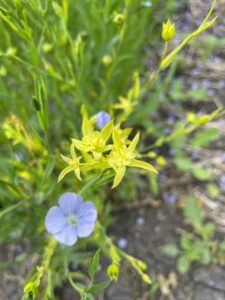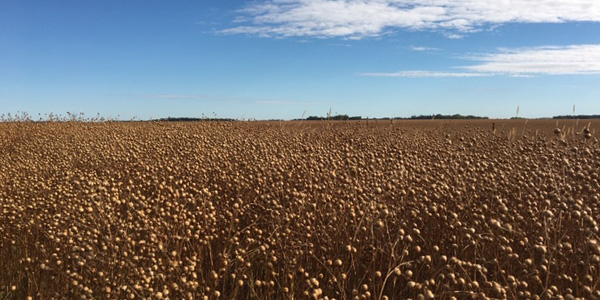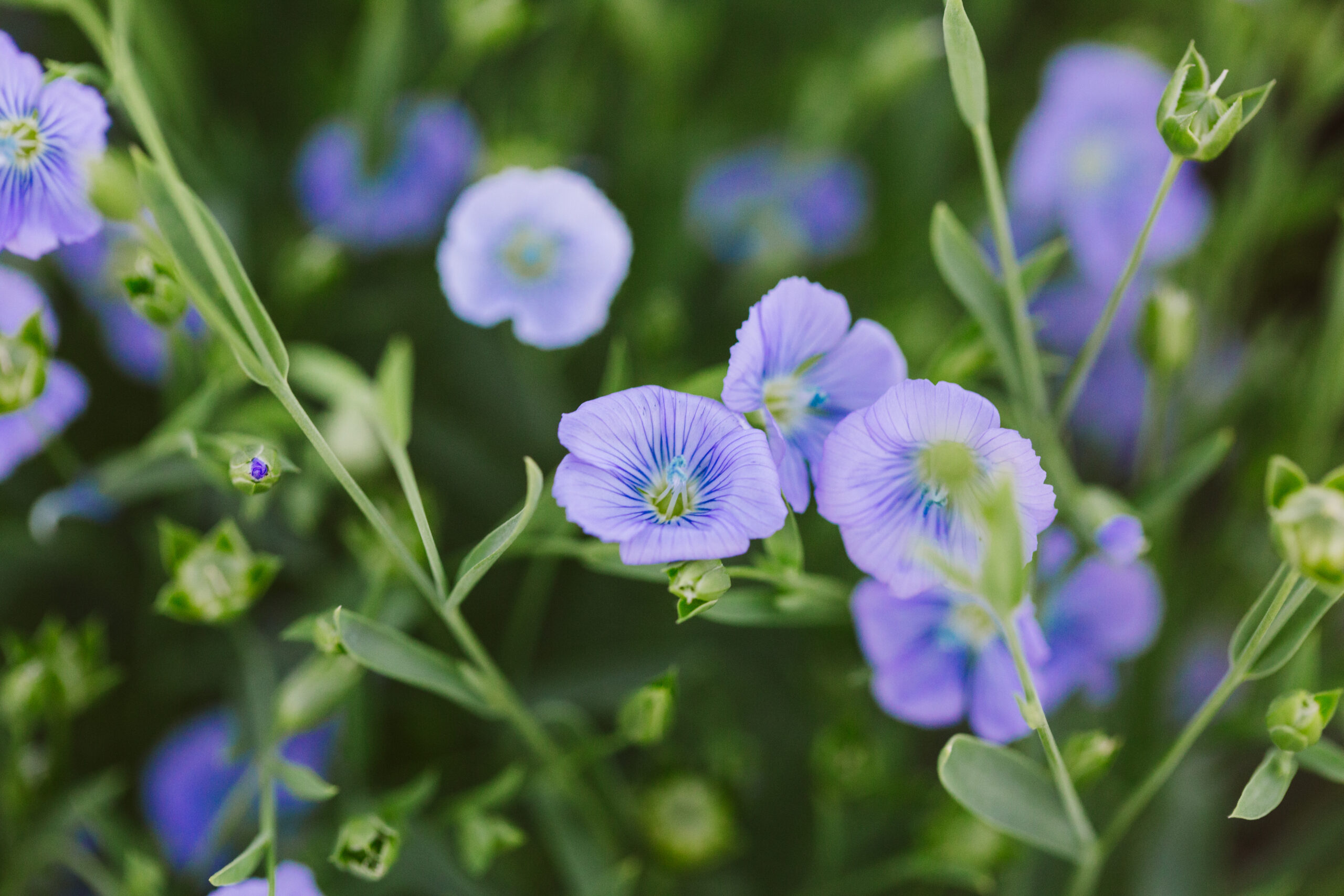Section Title
Diseases Affecting Flax
- Flax
Historically, wilt and rust have been the diseases that posed a threat to flax production, but recently, the incidence of pasmo and powdery mildew has been widespread, particularly in Manitoba. They have caused localized disease epidemics. Maintaining the resistance to rust and wilt continue as objectives in developing new varieties. Breeding for resistance to pasmo and powdery mildew is also occurring.
Rust
Rust is a constant threat to flax production because it can survive locally and can produce new races that attack resistant varieties. The causal organism is Melampsora lini, a fungus that overwinters by means of teliospores on flax debris. Early infections may completely defoliate flax plants and reduce the seed yield and fibre quality. Flax rust completes its life cycle on the flax plant, unlike many other rusts that require an alternate host. Currently, complete control has been achieved by the use of rust-resistant varieties. All registered varieties are immune to local races of rust.
Fusarium wilt
Caused by the seedborne and soilborne fungus. Fusarium wilt fungus invades plants through the roots and continues growth inside the water-conducting tissue. This interferes with water uptake, and warm weather therefore aggravates the disease. Seedlings may be killed shortly after emergence, while delayed infections cause yellowing and wilting of leaves, followed by browning and death of the plant. Roots of dead plants turn ashy grey. The tops of wilted plants often turn downward and form a “shepherd’s crook”. Affected plants occur more commonly in patches but may also be scattered throughout the field. The fungus persists in the soil, while the mycelia and spores survive for many years in debris of flax and other organic tissue. Wind-blown and run-off soil may spread the fungus from one field to another. The most important control measure is the use of available resistant/moderately resistant varieties. Crop rotation of at least three years between flax crops maintains low levels of inoculum in the soil.
Pasmo
Pasmo is a fungus that attacks above-ground parts of flax and overwinters in the soil on infected flax stubble. Flax is most susceptible to pasmo in the ripening stage. Pasmo can cause defoliation, premature ripening and can weaken the infected pedicels resulting in heavy boll-drop by rain and wind. Depending on the earliness and severity of the infection, pasmo reduces the yield as well as the quality of seed and fibre. Most commercial varieties lack resistance to this fungus. Pasmo is characterized by circular and brown lesions on the leaves and by brown to black infected bands that alternate with green and healthy bands on the stem. The best control is achieved by early seeding at the recommended rates to avoid high moisture conditions in the fall, using clean seed, treating seed with a fungicide, controlling weeds, and following a rotation of at least three years between flax crops.
Seedling Blight and Root Rots
Blighted seedlings turn yellow, wilt and die. Infected seedlings may occur singly or in patches. Seedling blight may be inconspicuous, and gaps in the row may be the principal sign of disease occurrence. Roots of recently affected plants show red to brown lesions and may later turn dark and shrivel. Diseased plants are often difficult to distinguish from those killed by the wilt fungus. Seedling blight and root rot can be controlled by a combination of farm practices. Use certified seed of a recommended variety. Reduce cracking of seed by proper combine settings. Treat the seed with a fungicide. Practice a rotation of at least three years between flax crops, and plant in a field that is distant from fields sown to flax in the previous year. Avoid legumes and sugar beets in the rotation. Provide a firm seedbed and use recommended fertilizer and seeding practices to promote vigorous stands. Sow flax on second-crop land after cereals rather than on summerfallow.
 Aster Yellows
Aster Yellows
Six-spotted leafhopper is the main vector which transmits the mycoplasma like organism that causes aster yellows in flax, other crops such as canola and sunflower, and in some weeds. The disease occurs annually but commonly only traces occur in Western Canada. Symptoms include yellowing of the top part of the plant, conspicuous malformation of the flowers, and stunted growth. All flower parts including the petals are converted into small, yellowish green leaves. Diseased flowers are sterile and produce no seed. The severity of the disease depends on the stage at which plants become infected and the number of insect vectors that carry the organism. The mycoplasma-like organism overwinters in perennial broadleaved weeds and crops, but most infections are carried by leafhoppers that migrate from the United States.
Powdery Mildew
First reported in 1997 and has spread quickly, with incidence and severity having increased sharply in Manitoba and Saskatchewan. Little is known about the overwintering and host range of this fungus in Western Canada. Early infections may cause severe defoliation of the flax plant and reduce the yield and quality of seed. Some flax varieties are resistant to this disease. Symptoms are characterized by a white powdery mass of mycelia that starts as small spots and rapidly spreads to cover the entire leaf surface. Heavily infected leaves dry up, wither and die. Early infections may defoliate the flax plant and reduce the yield and quality of seed. The most economical control is through the use of resistant varieties. Early seeding will reduce the impact of this disease on yield losses by avoiding the early infections and buildup of epidemics.









